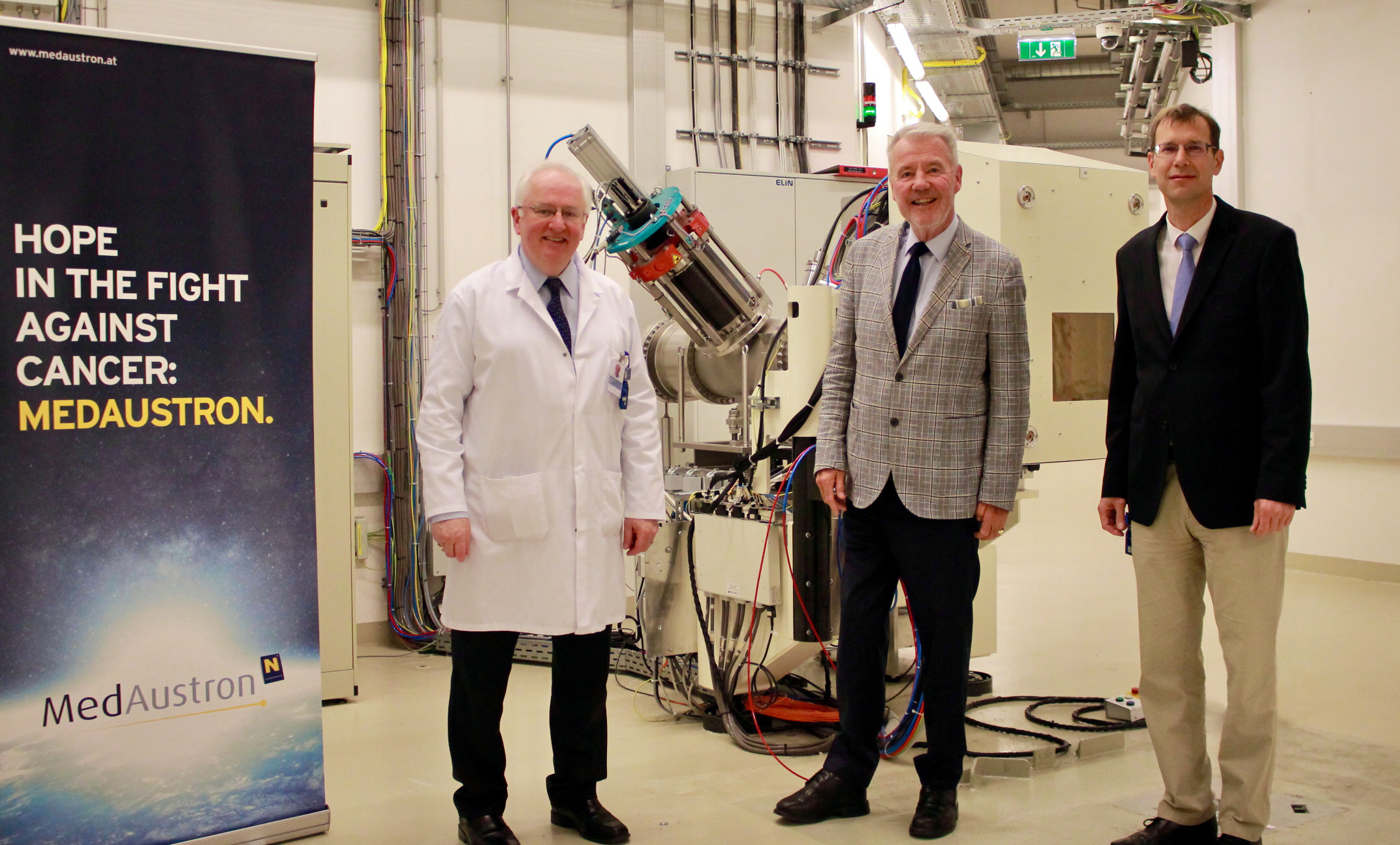New interdisciplinary research program
Interdisciplinary and integrative research combining physics, biology, computer and medical sciences has had a fixed place at MedAustron from the very beginning and has been successfully pursued with partner institutions for a long time. For the next three years, a new research program sets the direction and builds on what has been achieved so far.

The particle accelerator facility at the MedAustron center in Wiener Neustadt is used for the treatment of cancer patients on the one hand and is available to scientists from various fields on the other. They are mainly based at the Medical University of Vienna, the Vienna University of Technology, the University of Applied Sciences Wiener Neustadt, the Medical University of Graz and the Institute of High Energy Physics of the Austrian Academy of Sciences and have published 54 papers, written 59 theses and received funding for 10 projects in the past research period (2019 – 2021). New functionalities on the accelerator side could be developed for research work during this period, two new professorships could be established and the partnership with the neighboring University of Applied Sciences could be intensified.
In the new, three-year research period, the researchers will concentrate on four main areas: “Applied Particle and Medical Physics,” “Biophysics and Molecular Radiation Biology,” “Accelerator Physics,” and “Technical Innovations and Clinical Implementation. Following the development work of the past years, the translational character of the research will now become even more visible, which will also increase its international appeal. The current issues of clinical operation can thus be taken into account even better.
“With MedAustron, Austria has a globally visible radiation therapy center as well as a research facility with a broad range of applications and attractive research opportunities. The Ministry of Science has contributed significantly to this high-profile project in Lower Austria. I am therefore pleased that the past research period has been successful, that all those involved have taken advantage of this great opportunity, and that they are looking to the future with a well-founded program.”
“MedAustron has been a fixed part of both cancer therapy and research in Lower Austria since 2016 and is a unique Austrian center with international appeal. The topics and projects that the researchers in the new program are concentrating on form the basis for an enhanced therapy in the future. I am pleased that we have also been able to create ideal framework conditions for science at MedAustron through the cooperation with the federal government.”
While some projects form the basis for future research projects, such as performance improvements of the particle accelerator, the development of a beam monitor together with colleagues from HEPHY, or the preparation for the use of helium ions, others are already close to clinical application. For example, the treatment of eye tumors in a lying position will be applied at MedAustron for the first time worldwide. The necessary system of hardware and software components has been developed in collaboration between MedAustron clinicians and researchers. Completely new possibilities will also be opened up by in-vivo experiments, which are planned for the first time in the new period.
“What is distinctive about MedAustron is that research is not only limited to clinical studies within the scope of our activities as a treatment center, but that we also have the opportunity to improve numerous aspects of the therapy method in exchange with scientists from different universities and institutes. I am looking forward to the achievements we can expect from the new research period that will benefit the patients.”
Interest in the scientific use of the MedAustron facility is also steadily increasing beyond the established partners. For example, there are plans to perform irradiation tests for electronic components for use in space travel. Such equipment is naturally exposed to higher cosmic radiation in space, which significantly affects its functionality. An independent committee evaluates submitted projects such as this and ensures that the scarce resource, namely time at the particle accelerator, is distributed among all interested groups.
“The research program for the next three years will, on the one hand, combine the individual research priorities into four main areas and, on the other hand, provide the scientists with more beamtime for their projects. I am convinced that this will further increase the national and international visibility of research activities at MedAustron.”
